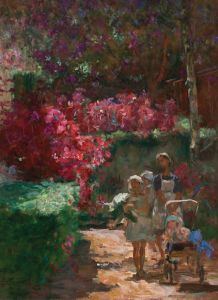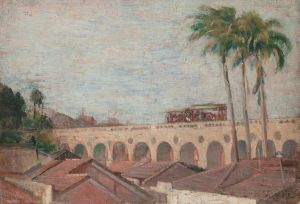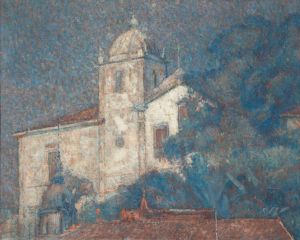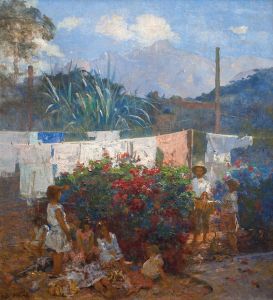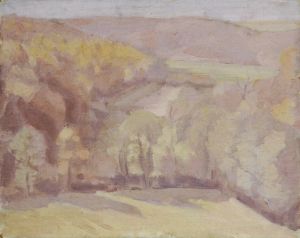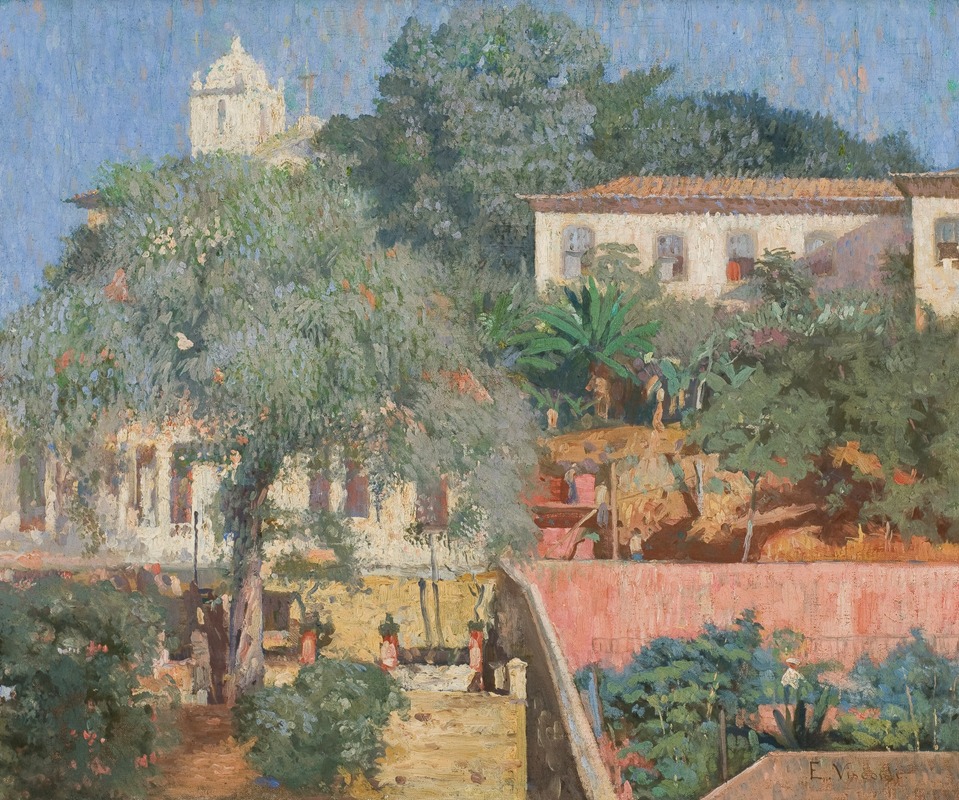
Paisagem de Santa Teresa
A hand-painted replica of Eliseu Visconti’s masterpiece Paisagem de Santa Teresa, meticulously crafted by professional artists to capture the true essence of the original. Each piece is created with museum-quality canvas and rare mineral pigments, carefully painted by experienced artists with delicate brushstrokes and rich, layered colors to perfectly recreate the texture of the original artwork. Unlike machine-printed reproductions, this hand-painted version brings the painting to life, infused with the artist’s emotions and skill in every stroke. Whether for personal collection or home decoration, it instantly elevates the artistic atmosphere of any space.
Eliseu Visconti's "Paisagem de Santa Teresa" is a notable work by the Brazilian artist, who is recognized as one of the pioneers of modern painting in Brazil. Visconti, born in 1866 in Salerno, Italy, moved to Brazil at a young age and became a prominent figure in the Brazilian art scene during the late 19th and early 20th centuries. He is known for his contributions to various art movements, including Impressionism and Art Nouveau, and his works often reflect a blend of European techniques with Brazilian themes.
"Paisagem de Santa Teresa" is a landscape painting that captures the essence of the Santa Teresa neighborhood in Rio de Janeiro, a place known for its historic charm and bohemian atmosphere. This area, situated on a hill, offers panoramic views of the city and is characterized by its winding streets, colonial-style houses, and lush greenery. Visconti's painting likely depicts these elements, showcasing his ability to convey the unique atmosphere of the location through his use of color and light.
Visconti's technique in "Paisagem de Santa Teresa" would have been influenced by his academic training and exposure to European art. He studied at the Liceu de Artes e Ofícios and the Imperial Academy of Fine Arts in Rio de Janeiro, where he was exposed to classical art forms. Later, he furthered his studies in Europe, attending the École des Beaux-Arts in Paris and being influenced by the Impressionist movement. This European influence is evident in his use of light and color, which are hallmarks of Impressionism, and can be seen in the way he captures the vibrant and dynamic atmosphere of Santa Teresa.
Throughout his career, Visconti was known for his versatility and ability to work across different genres, including portraiture, landscapes, and decorative arts. His works often reflect a deep appreciation for nature and a keen observation of his surroundings, qualities that are likely present in "Paisagem de Santa Teresa." The painting not only serves as a representation of a specific location but also as a testament to Visconti's skill in capturing the interplay of light and shadow, a technique that brings his landscapes to life.
Visconti's contribution to Brazilian art extends beyond his paintings. He played a significant role in the development of the country's art institutions and was involved in various cultural initiatives. His legacy is celebrated in Brazil, and his works are held in high regard, with many pieces housed in prominent museums and collections.
"Paisagem de Santa Teresa" is an example of Visconti's ability to blend his European training with his Brazilian experiences, resulting in a unique artistic style that resonates with both local and international audiences. The painting reflects not only the physical beauty of the Santa Teresa neighborhood but also the cultural and historical context of early 20th-century Brazil, making it a valuable piece of the nation's artistic heritage.










